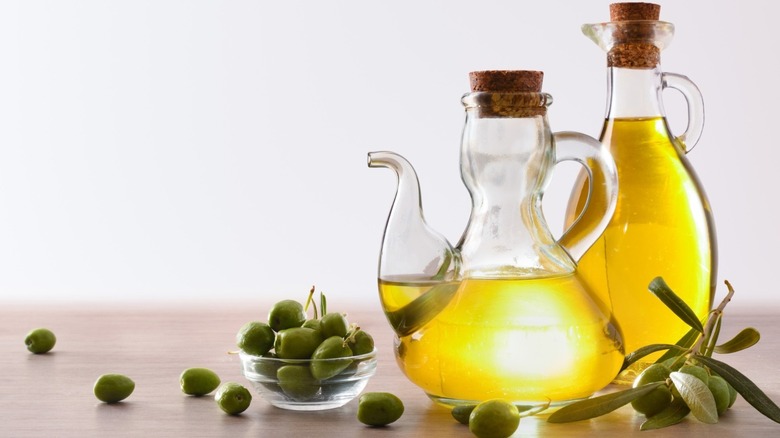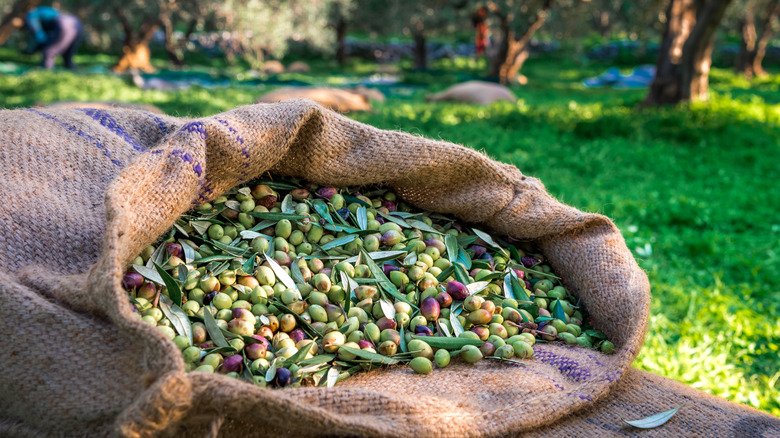The Ridiculous Number Of Olives That Go Into A Single Bottle Of Olive Oil
For millennia, olive oil has been a quintessential component of Mediterranean gastronomy, culture, and trade. Described as "liquid gold" by Ancient Greek poet Homer and "the great healer" by Hippocrates (via ScienceDirect), olive oil has been consumed for thousands of years for a variety of purposes, including sacrificial offerings, pharmaceutical ointments, rituals for anointing nobles, and even as lamp fuel (per ThoughtCo). Today, it is considered an extremely attractive ingredient for many recipes.
Pairing food with olive oil helps achieve harmonious flavors and adds more mouth-feel, even if used in small amounts. From drizzling it over salad or pasta to using it in marinades, olive oil is a highly versatile ingredient that can add a burst of flavor and depth to your food. In addition to having a variety of flavors and aromas, olive oil is a rich source of monounsaturated fatty acids, antioxidants, and polyphenols (per Healthline). It has proven health benefits, such as fighting inflammation, preventing stroke, protecting against heart disease, and reducing the risk of Type 2 diabetes. Even a study has found that olive oil could help you live longer.
And if the culinary usefulness and health benefits of olive oil weren't enough, you'll gain a new appreciation for this amazing oil after you learn how many olives it takes to make a single bottle of olive oil.
11 pounds of olives have a surprisingly small yield
Out of all the olives harvested in the world, 90% of them are destined for oil production (per Olive Oil Times). It takes about 11 pounds of olives to extract only one quart of extra virgin olive oil, according to D'Olivo. That means it takes about 5,200 to 8,000 olives to produce just 32 ounces of olive oil (via Olive Emotion). Given that most mature olive trees produce about 33 to 44 pounds of olives annually (only enough to extract 3 to 4 quarts of virgin olive oil), it's a small output by any measure. Since extra virgin oil is only made from the first press without using heat, solvents, refining methods, or chemical processes, the yield fetches more than other types of olive oils.
Olive oil is expensive compared to other food oils for several reasons, including the difficulty to harvest and process the oil to high import prices. Nevertheless, global olive oil consumption reached 3.2 million metric tons in 2021/22 (per Statista). With the increase in the demand for olive oil, the global olive oil market is projected to reach $16.64 billion by 2027 (per Fortune Business Insights).

